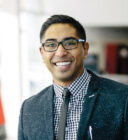
Many successful dentists begin their journey at an international accredited program. What’s often misunderstood is the cost and time associated with pursuing an out-of-country education overseas. It should come as no surprise that the cost is great but the outcome is equally so. Many students who attend these universities do so without much financial assistance and, as such, realize a great debt through provincial, federal and bank issued student loans.
But what about the obvious? Many of those students have sizeable financial help which gets them through those programs so they graduate with little to no debt. It’s something very few want to talk about. Maybe it’s embarrassment, maybe it’s pride, but ultimately, they’re also putting in the time, work and dedication to becoming a dentist. Upon their return to Canada, things will look considerably different financially. Federal student loans are currently interest free with quite manageable repayment terms. While provincial loans are mostly with interest but tax deductible. That leaves the private loans, which become lines of credit, as the crux of a new dentist’s cash flow. In order to reach financial freedom, i.e. debt free, new dentists must prioritize attacking the non-tax deductible student debt.
Commonly, students graduate with goals of purchasing, starting a family, a home, or setting up their professional corporation and saving towards a clinic purchase; all of these goals are stunted by the crushing blow of high interest rates that exist today. The going rate for private dental student loans, be it through one of the big 5 banks or otherwise, is prime minus 0.25%. If a student isn’t receiving this rate they should talk to their banker. Today prime is at 7.2% with most of the big banks. Remember, prime is set by the bank that you’re dealing with and should be similar if not the same amongst all banks you’re considering. But we’re talking about getting it all right and graduating with little to no debt.
The vast majority of international graduates come back to Canada with anywhere from $300,000 to $500,000 of student debt, much of it coming from the banks with non-tax deductible interest. Students accumulate education/tuition tax credits but they’re quickly used up within the first couple of years of practise. To pay off this debt they have to generate large incomes and overcome large tax rates.
If given the opportunity to come out of school relatively debt free, who wouldn’t take it? Of course you would! The chance to start immediately accumulating savings towards your goals puts you years ahead in comparison to a debt laden graduate. There may even be the opportunity to incorporate much sooner if deemed appropriate by your tax advisor.
Let’s take a look at Jeff.
He’s an internationally trained graduate from overseas (from a Canadian accredited program), who has accumulated about $77,000 of provincial and federal student loans and had the benefit of family support where no bank issued student loans were required. Within six months of graduation, Jeff is taking home approximately $20,000 to $24,000 per month by consistently billing around $60,000 per month. With such a large income realized within the first six months, Jeff was able to pay off his provincial loans and is only left with interest free federal loans. What a great problem to have given the state of interest rates. Much of how Jeff approaches his surplus cashflow depends on his goals, which we talk about regularly as a goals-based plan. How and where are we going to best direct his funds so he may realize his given goals? Jeff is looking to buy his first home but has no timeline and no other major considerations for his savings or cashflow. So far, he’s renting an apartment and able to cover off all his costs with only $3,000 per month other than a few annual expenses such as insurance and membership dues.
Something that catches new grads by surprise is the amount of tax they’re subjected to after having paid no tax through school. Tax is based on residency and will depend on where you live but generally most new dentists should expect to set aside 1/3 of their take home pay from the clinic to save towards taxes.
Taking into consideration the future taxes Jeff is going to be responsible for, we recommend he set aside funds right away so that he’s not caught off guard when he does file taxes in a year from now. Even after considering for his living expenses and tax savings there’s a large surplus every month that can be used towards a down payment for a home purchase and other general long-term asset accumulation. For the grad with debt anxiety, they might opt to just pay off the federal loans; some people call that “the sleep good at night” approach. Jeff opted to start investing right off the bat. His investment of choice is an ETF that tracks the S&P 500. Many new dentists have some exposure to investing while in school as it’s become a popular discussion point and social media algorithm.
After discussion with Jeff, we recommend the need to match his investment goals with his planning goals. We pointed out that the S&P 500 might be too much risk when saving for taxes and other short term goals. Much of the interest around buying an ETF has to do with hindsight bias and groupthink; these structures are popular, much hyped, and individual investors are quick to point out past track records. The primary issue with investing in an ETF is a lack of understanding for what it actually is. The role of your advisor is to discuss and educate a new dentist on how to best fit these various tools and structures in your portfolio and to filter out the noise on the street. Jeff opted to split his portfolio between a high interest savings account, paying over 5% for his future tax bill, and a portfolio of individual stocks that is similar to the S&P 500 for his house purchase (as he doesn’t foresee the purchase happening for a number of years).
Jeff has accounts set up to save using a tax-free savings account (TFSA), a first home savings account (FHSA), and finally a registered retirement savings plan (RRSP). Next on his list is to discuss tax deferral through incorporation with his trusted advisors. There are many tools available but a custom fit plan and approach will always overtake the shiniest and brightest tool in the toolbox.
Jeff’s Financial Picture
Jeff, 27, has a long term girlfriend and no children
Goals: Pay down student debt as tax efficiently as possible. Save towards a down payment for a first home purchase. Start accumulating wealth.
Estimated monthly after-tax income: $13,000
Assets: None
Liabilities: Federal/Provincial debt of $77,000.
Monthly outlays:
Rent $1,500; tenant’s insurance $75; electricity $110; heating $125; vehicle lease $1,150; insurance $300; other auto $200; groceries $500; clothing $200; vacations, travel $500; additional discretionary $200; dining, drinks, entertainment $400; personal care $100; club membership $175; other individual $200; communications $300
Total: $6,035
A surplus of $6,965 of which $650 goes towards government student loans and the difference towards his goals.
About the Authors:


Richard Lochhead, CIM, Portfolio Manager/Senior Wealth Advisor, Renn Financial Group and Joshua Fernando, Partner, Insurance, Renn Financial Group, leverage their experience and expertise to offer real opinions, practical explanations and unmatched service on financial strategies concerning Canadian dentists. Richard is a portfolio manager, car enthusiast and soccer fanatic. Joshua is an insurance expert and a former Canadian reality TV show contestant. Together they make up Renn Financial Group, a Canadian-based independent brokerage specializing in insurance, tax, and wealth.

